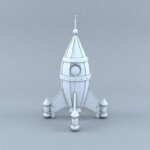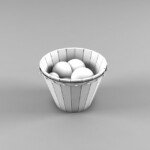Mastering CNC Cutting of Plexiglass: Expert Tips and Skills Flawless Results
Plexiglass (acrylic) is a popular material in countless industries – from signage and display to aerospace components and medical equipment. Its crystalline clarity, durability and processability make it a favorite. However, achieving professional, smooth and crack-free results requires precision and expertise. CNC machining, especially with advanced features of five-axis milling, is the gold standard for complex and high-quality plexiglass cutting. Let’s dig into the key tips and tricks used by professionals to carefully tailor this versatile material on CNC machinery.
Why is it used for CNC processing of plexiglass?
Before we dig deeper, let us understand why. CNC machining offers obvious advantages with manual or laser-cut plexiglass:
- Unparalleled precision: CNC machines transform digital design into reality with microscopic accuracy, which is crucial for complex geometry or tight tolerances.
- High-quality quality: The correct CNC cutting technology produces significantly smooth, polished edges, minimizing the wide range of post-processing needs.
- Complexity becomes easy: For multi-axis CNC machines, complex contours, pockets, prints and 3D shapes are effortless.
- Scaling and repeatability: Once programmed, the CNC machine will repeatedly produce the same parts, which is crucial for production operations.
- Material integrity: Unlike laser cutting that sometimes causes thermal stress or bubbling, the correct CNC method avoids excessive heat, thus maintaining optical clarity and structural integrity.
Basic tips and tricks for flawless CNC cutting
Mastering plexiglass on CNC machines involves attention to detail at each step:
-
Material selection is crucial:
- Actors and Squeezes: Know your acrylic. Cast acrylic acid Provides excellent machining, excellent optical clarity after (internal pressure), and better results for deep engraving. Extruded acrylic acid More economical and beneficial for simpler cuts, but is often harder and easier to chop or develop internal pressure marks during processing. Castings are preferred for key applications requiring clear edge completion. Discuss your material choices with an expert.
- Thickness is important: Adjust the feed and speed significantly according to the thickness. Thicker sheets require a more conservative approach to prevent fragmentation and manage heat buildup. Make sure your machine stiffness matches material thickness and cutting force.
- Protective film: Remove only the protective film back Processing has been completed. The film shields the surface during the process, fixation and cutting of debris impact. Deleting it beforehand can cause irreparable damage.
-
Tool selection: The forefront of success:
- Single-line O-flute cutting machine: These are widely believed optimal choose. Their design effectively evacuates the chip upward from the cutting, reducing heat buildup and prevents melting/SWARF re-soldering, resulting in melting and roughness. This results in cutouts in the detergent and greatly reduces the need for edge finishing. Treble geometry is crucial.
- Clarity is not negotiable: Always use Razor Tools. The dull tool melts the acrylic instead of cutting cleanly, creating rough edges, burrs, strings and internal pressures. Check and replace tools dedicated to acrylic regularly.
- Geometry and coatings: Avoid tools for hard metals. Polished flutes and non-stick coatings such as ZRN can further reduce friction and debris adhesion. Tools with high rake angles perform well. Due to its extremely high lifespan, diamond-coated bits can be excellent for mass production.
- Avoid cutting machines: They can capture the chip and cause the edges to melt.
-
Machine Settings: Precision Engineering:
- Feed and Speed - Balance Method: This is very important. Running too slowly can cause melting; running too fast can cause debris/layering. Start with your tool supplier’s recommendation or a reliable chart based on specific tool diameters, flute counts and material thickness/thickness. General Rules of Thumbs (Start and Adjustment): High RPM (e.g. 10,000-18,000 rpm), medium to high feed rate Evacuate heat. Perform a cut test!
- Climbing and milling: priority Climbing up milling (The tool becomes the feed direction). Compared to conventional milling, the technique produces cleaner edges with less chance of breaking on the top surface.
- Depth of Cutting (DOC) and Stepover: use Optical axial document (Depth of each pass) Even for shallow final pass. Rough processing can use slightly deeper cutting, but is still conservative. Keep Radial pedal Relatively low (e.g. 10-40% of the cutter diameter) to avoid excessive tool deflection and heat concentration. Multiple shallow frequencies are better than several deep, aggressive passes.
-
Fixed and Labor: Stability is King:
- Avoid clamping pressure points: use Diffusion fixture technology. Vacuum gauges are ideal as they evenly distribute fixing forces throughout the paper, minimizing pressure and preventing warping or cracking due to local pressure. If a jig is needed, use a larger soft jaw (nylon, face) or a sacrificial lining to spread the load and pad contact points.
- Prevent vibration: Ensure the workpiece is absolutely safe. Any tremor or vibration during the cutting process will result in visible tool marks, endless chats or poor edge quality. Check the machine’s stiffness and grid.
- Sacrifice Support Committee: Always use high-quality MDF or wood Sacrifice back Under plexiglass. This prevents outlet blowout and splitting as the tool passes through. It also provides a fixing surface for vacuum fixation. Replace frequently.
-
Manage the calorie: Silent Enemy:
- Minimize heat generation: The core of successful acrylic cutting is to minimize heat. This is mainly achieved through sharp tools, correct feed/speed (allowing the chip to carry heat) and effective chip evacuation. The tool path should maximize chip removal efficiency.
- Cooling Strategy: The best air is: Pressurized air (coolant) It is the preferred method. Avoid liquid coolants unless designed specifically for acrylic (certain water-soluble synthetic agents). precisely For non-fanity) – Standard lubricants may cause madness or atomization. The air explosion immediately removes the chip and provides a small amount of convection cooling. Fog system Use a small amount Water only If absolutely necessary, you can use it with caution when cutting, but the air is safer. no way Use standard aqueous solution-based coolants – they Will be Causes madness.
- Processing and Post-processing: Final Touch:
- Gentle treatment: Plexiglass is prone to scratches. After removing the protective film, be sure to treat the cut parts with clean gloves (cotton or non-paste nitrogen).
- Burr clears: A lightly scorching pass (very shallow, high-speed fixed pass, using the same sharp tools and air explosion) can usually be used to remove secondary burrs or machining lines. Optical clarity can be achieved from coarse particles (e.g. P320) down to fine particle size (P1500+), and then polished with polishing compounds designed for acrylic.
- Flame polishing (play with caution): For edges, the flame passes through the polishing effect almost immediately (smooth, colorful appearance). A lot of exercise is required to avoid melting or bubbling – Use a dedicated flame polishing tool with a consistent, clean (smoke-free) flame.
Conclusion: Accurate, expertise and correct technology
Successful CNC machining of plexiglass requires harmonious integration of the right materials, careful sharp tools, precise machine commands, intelligent fixation, meticulous heat management, and careful handling. By understanding the unique properties of acrylic and applying the tips and techniques outlined above, manufacturers can consistently implement parts with professional-level clarity, smoothness and dimensional accuracy.
This level of accuracy and quality cannot be achieved through guessing. It requires not only advanced machinery, but also deep understanding of materials science and process expertise. The company likes it Great Embody this synergy. As a leading manufacturer with state-of-the-art equipment Five-axis CNC machining centerGremight has the unrivalled ability to make plexiglass. Five-axis machining opens the door for previously impossible geometric shapes and tilt features in a single setup to maintain absolute accuracy. Combining advanced production technologies and working to solve complex manufacturing challenges, including complex metal parts, Greatshile specializes in turning complex designs into reality. Our one-stop service includes not only precise cutting, but also comprehensive post-processing and finishing options. Whether it’s prototype or large capacity running, we offer fast, customized machining solutions in most materials, always striving for Best price performance ratio.
Prepare to experience differential precision CNC cutting can make a difference for your plexiglass project? [Contact GreatLight today for an expert consultation and quote!]
Frequently Asked Questions about CNC Cut Plexiglass (FAQs)
Q1: Why does my plexiglass break or chip when CNC is cutting?
A: Common reasons include the use of blunt tools, incorrect feeding and speed (too slow will lead to melting and pressure accumulation, resulting in too fast debris), excessive clamping pressure will create pressure points, or processing near the edges without sufficient support. Using extruded acrylic instead of casting for harsh cutting may also help. Ensure sharp tools, optimize parameters, use diffusion fixtures (vacuum priority), and consider acrylic for critical applications.
Q2: My plexiglass edges melt and rough. What’s wrong?
A: This classic question is almost always related to heat. Causes include blunt tools that create excessive friction, incorrect feed/speed (usually too slow), insufficient chip evacuation, the ability to use the wrong tool geometry (rather than O-flute), or lack of cooling air. Switch to a new, sharp single or two-wire O-flute drill bit to increase feed rate and appropriately increase RPM, directly ensuring strong air explosions when cutting and effectively removing the chip.
Q3: Can I use the same CNC tool for plexiglass and aluminum?
A: Although it may be discouraged. Tools optimized for metals usually have different geometries and paints that are less effective against acrylic and are more likely to cause melting or fragmentation. Sharp O-tools designed for plastics ensure optimal results and prevent contamination. Aluminum chips can also be embedded in acrylic surfaces.
Q4: Does CNC cutting plexiglass require liquid coolant?
A: Generally speaking, No. Liquid coolants, especially liquids in oily aqueous solutions, can easily cause debris (fine cracks) or turbidity of acrylic acid. Pressurized air explosion is the standard and recommended method for cooling and removing chips. If additional cooling is required, use very few carefully controlled atomization systems Pure water only Used with caution, but air is preferred and material integrity is safer.
Q5: What makes five-axis CNC (as Greatlight offers) better suited to plexiglass?
A: Five-axis CNC machining revolutionizes the fabrication of plexiglass by allowing tools to approach the material from any angle in a single setup. This means:
- Complex, organic 3D shapes and deep undercuts may not require reinstallation.
- Excellent accuracy on angular surfaces and edges.
- Reduce the need for multiple fixtures and settings, saving time and potential misalignment.
- Ability to optimize the cleanest tool angle optimization tool approach angle across complex geometric shapes. It is ideal for complex displays, custom lenses, aerospace/fixtures, and works of art that require high precision and minimal post-processing.
Question 6: How important is the protective film on plexiglass during CNC work?
one: Crucial! Always use protective film machines exist. It protects the original surface from scratches, flight chips and operator handling during the process. It is only removed after all the machining and post-processing steps are completed to reveal the perfect acrylic below. Consider using high-quality films designed to withstand processed debris.

















